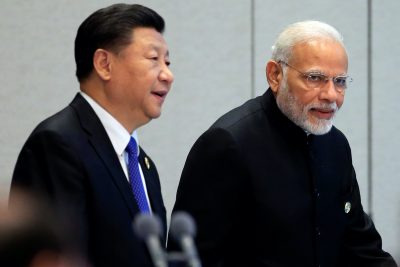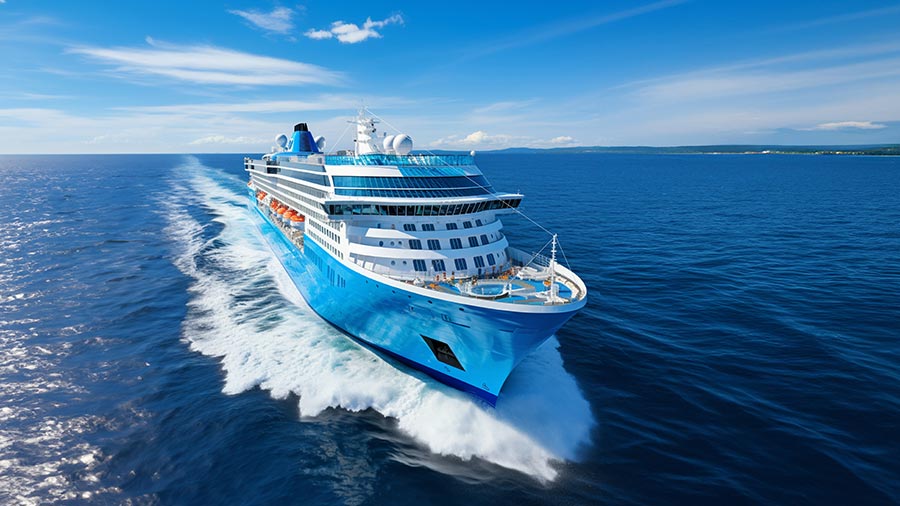China
Why a ‘Nixon moment’ in India–China relations is unlikely

Author: Raj Verma, Huaqiao University
India–China relations have hit a nadir after the recent clash between Indian and Chinese troops in the Galwan Valley. Although disengagement and de-escalation is underway, tensions remain high. Some argue that there has been a Chinese and Indian leadership failure in ensuring amicable ties, pointing to ‘a historical failure on both countries’ parts to initiate a Nixonian moment in their relationship’, a reference to the former US president’s promoting pragmatic coexistence with China.
But calling for a ‘Nixon-in-China moment’ in India–China relations implies a set of false analogies in the relationships between India, China and the United States today, and those between the United States, China and the Soviet Union that prevailed when Richard Nixon landed in Beijing in 1972.
The dynamics within the US–USSR–China triad and the US–China–India triad are different. During the Cold War, the United States was the most dominant economic and military power globally and in Asia, followed by the Soviet Union and China. The United States and the Soviet Union were also on opposing sides during the Cold War.
After its establishment in 1949, the People’s Republic of China espoused Marxism-Leninism and consolidated an alliance with the Soviet Union. But bilateral relations hit rock bottom in the 1960s especially after the clash along their disputed border in 1969. It is in this context that the United States (the leading power) and China (the weakest power in the triad) established relations aimed at countering their common enemy, the Soviet Union.
Today, the United States is the hegemon, albeit in decline, and India is the weakest power in a US–China–India triad. China–US relations have gone from bad to worse, especially through the COVID-19 pandemic. On the other hand, India–US relations have blossomed in the 21st century. Political, diplomatic, economic, security and military ties between the world’s two largest democracies have strengthened and deepened.
For its part, India is wary of China’s assertive foreign policy, including attempts to curtail India’s rise as a great power. Beijing wants New Delhi to be enmeshed in South Asian affairs so that India’s political, diplomatic and military resources are not utilised to challenge China’s rise as the predominant power in Asia.
Unlike the India–China and China–USSR dyads, the United States and China are not neighbours. In 1969, at the height of the China–Soviet split the two countries had a seven-month border conflict, which ended in a ceasefire with the status quo ante restored. But the border dispute was not resolved and rivalry between the two countries was extended to countries in Asia, Africa and the Middle East. Bilateral relations only improved, slowly and steadily, in the 1980s.
India fought a limited border war with China in 1962, where the former was defeated and China captured Aksai Chin, a piece of territory claimed by India. The 1962 war exacerbated mistrust and led to the breakup of diplomatic ties between the two countries until 1976. The two countries also had border skirmishes at Nathu La, Sikkim, in 1967, and at Tulung La, Arunachal Pradesh, in 1975. In the 21st century, both have blamed each other for border transgressions along the un-demarcated Line of Actual Control (LAC). Tensions rose again in 2013 and 2014 when India blamed China for encroaching on Indian territory, denied by China. The matter was resolved when both sides withdrew troops.
In 2017, the two countries had a 72-day military standoff in Doklam at the China–Bhutan–India trijunction. There were fears of this spilling over between the two nuclear-armed neighbours. The standoff resolved after both sides withdrew troops and China agreed not to build a road in Doklam.
One explanation for recurrent border transgressions is geopolitical, in attempting to put pressure on India to kowtow to China and show India its place in the Asian hierarchical order. Another is domestic factors, such as Chinese expansionism and rising nationalism, which makes it difficult for leaders to compromise on territorial sovereignty. China is also anxious about India’s construction of roads, bridges, tunnels and other infrastructure along the disputed LAC. China is especially concerned over the construction of the 255-kilometre Darbuk-Shyokh-Daulat Beg Oldie (DS-DBO) all-weather road due to its tactical advantage along the LAC.
Government leadership in both countries is essential for strengthening India-China relations and to…
China
Foreign Tourist Groups on Cruise Ships Fully Permitted Visa-Free Entry in China

China will allow visa-free entry for foreign tourist groups arriving by cruise ship at 13 ports along the coast, starting May 15, 2024. Visitors must stay with the same ship and in permitted areas for up to 15 days. This policy aims to boost tourism and facilitate high-quality development in the cruise industry.
China’s immigration agency announced that it will grant a visa-free policy for foreign tourist groups to enter China by cruise at all cruise ports along the coast of China, starting May 15, 2024. The tourist group must remain with the same cruise ship until its next port of call and stay within permitted areas for no more than 15 days.
Effective May 15, 2024, the National Immigration Administration (NIA) has officially implemented a visa-free policy for foreign tourist groups entering China via cruise ships. This progressive move aims to enhance personnel exchanges and foster cooperation between China and other nations, furthering the country’s commitment to high-level openness.
Under this policy, foreign tourist groups, comprising two or more individuals, who travel by cruise ship and are organized by Chinese domestic travel agencies, can now enjoy visa-free entry as a cohesive group at cruise ports in 13 cities along the Chinese coast.
The tourist group must remain with the same cruise ship until its next port of call and stay within China for no more than 15 days. The eligible areas for this policy are coastal provinces (autonomous regions and municipalities) and Beijing.
Furthermore, to support cruise tourism development, seven additional cruise ports—Dalian, Lianyungang, Wenzhou, Zhoushan, Guangzhou, Shenzhen, and Beihai—have been included as applicable ports for visa-free transit.
The recent implementation of the visa-free policy for foreign tourist groups entering China via cruise ships is poised to have several significant effects. The policy will provide crucial support for the cruise economy and the overall cruise industry. By facilitating smoother travel for foreign tourist groups, it acts as a catalyst for high-quality development in this sector.
Additionally, under this policy, international cruise companies can strategically plan their global routes by designating Chinese port cities, such as Shanghai, Xiamen, and Shenzhen, as docking destinations. This move is expected to attract more cruise ships to Chinese ports, ultimately bringing in a larger number of international visitors to the Chinese market.
This article is republished from China Briefing. Read the rest of the original article.
China Briefing is written and produced by Dezan Shira & Associates. The practice assists foreign investors into China and has done since 1992 through offices in Beijing, Tianjin, Dalian, Qingdao, Shanghai, Hangzhou, Ningbo, Suzhou, Guangzhou, Dongguan, Zhongshan, Shenzhen, and Hong Kong. Please contact the firm for assistance in China at china@dezshira.com.
China
China’s New Tariff Law: Streamlining and Standardizing Current Tariff Regulations

China’s new Tariff Law consolidates import and export duties, clarifies rules for imposing counter-tariffs, and sets a December 1, 2024 effective date. It codifies existing practices on cross-border e-commerce and rules on the origin of goods into law, impacting trade relations.
China’s new Tariff Law consolidates rules on import and export duties that were previously implemented via several legal documents and makes important clarifications and additions to prior regulations. Among other changes, it stipulates provisions for the Chinese government to impose counter-tariffs on imported goods, codifying these powers into law for the first time. We outline all the notable updates to the China Tariff Law and discuss the implications for the country’ current trade relations.
On April 26, 2024, the National People’s Congress (NPC), China’s legislature, adopted the Tariff Law of the People’s Republic of China (the “Tariff Law”) after several rounds of revisions.
The new Tariff Law will replace the Import and Export Tariff Regulations of the People’s Republic of China, which fall under the purview of the State Council, and adopts many of its provisions.
Previously, Chinese law had not stipulated legislative powers to implement countervailing tariffs, although China was nonetheless able to impose counter-tariffs on trade partners through other means.
China’s new Tariff Law comes into effect on December 1, 2024.
China’s Tariff Law elevates several existing provisions and practices to the level of law. For instance, Article 3 of the Tariff Law clarifies the obligations of cross-border e-commerce platforms for tariff withholding and implementing consolidated taxation.
The Tariff Law also solidifies the rules and regulations on the origin of goods, stipulating that the application of tariff rates shall comply with the corresponding rules of origin. Although this has been previously implemented in practice, it is the first time this has been codified into law.
This article is republished from China Briefing. Read the rest of the original article.
China Briefing is written and produced by Dezan Shira & Associates. The practice assists foreign investors into China and has done since 1992 through offices in Beijing, Tianjin, Dalian, Qingdao, Shanghai, Hangzhou, Ningbo, Suzhou, Guangzhou, Dongguan, Zhongshan, Shenzhen, and Hong Kong. Please contact the firm for assistance in China at china@dezshira.com.
China
Outlook on Bilateral Trade and Investment between China and United Arab Emirates (UAE)

The UAE and China have a strong partnership, with the UAE being China’s top trade partner in the Arab world. Both countries collaborate on various sectors like logistics and technology, showcasing mutual commitment to economic growth and global cooperation. High-level trade and investments continue to drive their relationship.
The UAE and China share a robust partnership integral to both countries’ development and foreign policy goals, exemplifying a model of collaboration. Bilateral trade thrives, with the UAE as China’s top trade partner in the Arab world, while investments span key sectors like logistics and technology. This comprehensive strategic partnership continues to evolve, showcasing mutual commitment to economic growth and global cooperation.
The United Arab Emirates (UAE) holds a significant position in China’s trade and commercial connections within the Middle East, particularly in the Arab Gulf region. This partnership is integral to China’s broader strategic initiatives, including the Belt and Road Initiative (BRI), which the UAE actively supports.
Additionally, the UAE plays a crucial role in advancing China’s foreign policy objectives, such as enhancing South-South cooperation, particularly in technical collaboration among developing nations and the Global South in areas like resources and technology.
In this article, we delve into the dynamics of bilateral trade and investment between the UAE and China, exploring the key factors driving their economic relationship and the opportunities it presents for mutual growth and prosperity.
China and the UAE first established their diplomatic relations in 1984. While China has an embassy in Abu Dhabi and a consulate general in Dubai, the UAE has a consulate general in Hong Kong and an embassy in Beijing. China and the UAE have long been close partners, collaborating extensively on economic, political, and cultural fronts.
In 2018, Chinese President Xi Jinping went on a state visit to the UAE, making history as the first Chinese head of state to visit the country in the previous 29 years. The visit was instrumental in lifting bilateral relations to a ‘comprehensive strategic partnership’.
High-level trade has always been the foundation of bilateral ties. Bilateral commerce between China and the UAE reached new heights in 2021, surpassing US$75.6 billion. Additionally, as of 2022, about 6,000 Chinese businesses operate in the UAE, with a sizable Chinese population working primarily in the infrastructure and energy sectors. The UAE is also China’s second-largest economic partner in the Middle East, after Saudi Arabia.
This article is republished from China Briefing. Read the rest of the original article.
China Briefing is written and produced by Dezan Shira & Associates. The practice assists foreign investors into China and has done since 1992 through offices in Beijing, Tianjin, Dalian, Qingdao, Shanghai, Hangzhou, Ningbo, Suzhou, Guangzhou, Dongguan, Zhongshan, Shenzhen, and Hong Kong. Please contact the firm for assistance in China at china@dezshira.com.






